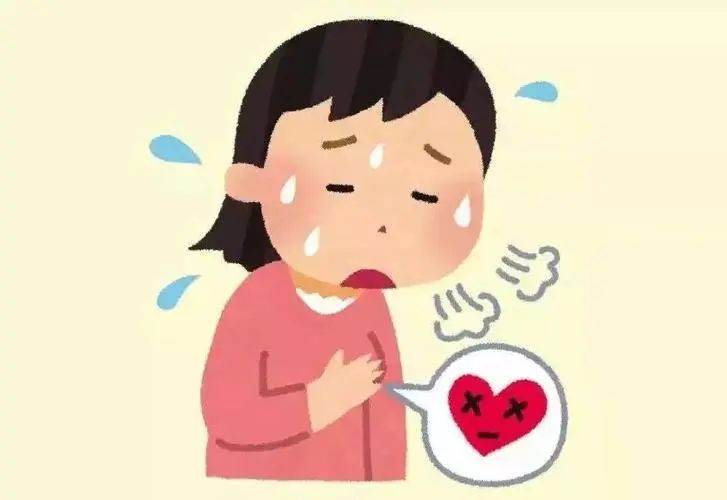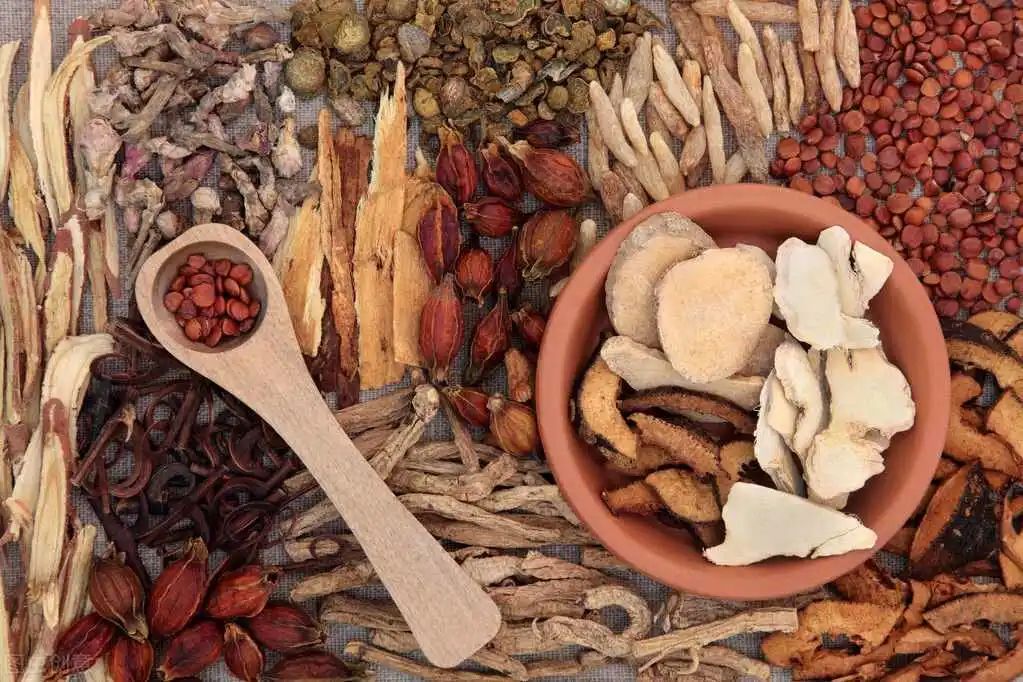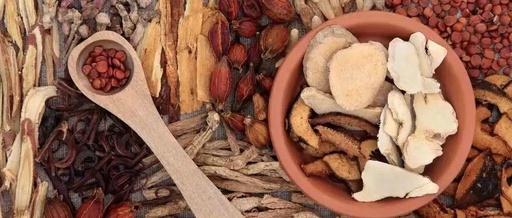
Chest Bi
Chest Bi (Xiong Bi) is a term in Traditional Chinese Medicine (TCM) that first appeared in the Huangdi Neijing Ling Shu: Ben Cang. It refers to a condition characterized by chest tightness and pain, which can extend to the back, shortness of breath, and difficulty lying down. Mild cases may only experience a sensation of chest tightness, while severe cases can lead to intense heart pain radiating to the back, accompanied by a heavy feeling in the body, poor appetite, belching, and abdominal distension, particularly after eating. Insomnia lasting over 50 years may also be present, requiring medication for sleep. The tongue is pale red with a thin white coating, and the pulse is thin and weak. The etiology of Chest Bi is related to internal invasion of cold pathogens, improper diet, emotional disturbances, and physical weakness due to aging. It is often caused by obstruction of Yang Qi in the upper jiao, leading to accumulation of fluids, phlegm, and blood stasis in the chest, resulting in obstructed meridians. The disease primarily affects the heart but is also related to the spleen and kidneys. The pathogenesis is characterized by a deficiency of the root and excess of the branch, where the deficiency pertains to the insufficiency of Yin, Yang, Qi, and blood, while the excess involves the interplay of Yin cold, phlegm, and blood stasis. Differentiation should clarify the deficiency and excess; for excess patterns, methods such as invigorating blood circulation, warming Yang, and resolving phlegm should be prioritized; for deficiency patterns, the focus should be on nourishing and supporting the body, either by nourishing Yin and benefiting the kidneys, or tonifying Qi and warming Yang. However, in clinical practice, many cases present a mix of deficiency and excess. Professor Xian Shaoxiang often employs a combined approach of tonification and dispersal based on differential diagnosis, either adding phlegm-resolving and blood-invigorating herbs to tonifying formulas or incorporating Qi and blood tonics into dispersing treatments, achieving a balance of tonification and purging, with Yin and Yang harmonized, allowing for flexible adjustments, thus yielding significant therapeutic effects.

Patient History and Treatment Process
01
Patient Fang, a 66-year-old male, presented with symptoms of “chest tightness and fatigue for over 4 months.” The patient frequently experiences chest tightness without chest pain, lasting about 30 minutes, which can be alleviated by resting after taking emergency heart pills. He reports a heavy feeling in the body, poor appetite, frequent belching, and abdominal distension, particularly after meals, along with sleep disturbances and insomnia for over 50 years, requiring medication to sleep; otherwise, he cannot sleep through the night. Bowel and bladder functions are normal. The tongue is pale red with a thin white coating, and the pulse is thin and weak. The patient has a history of grade 3 hypertension and cerebral infarction, with aortic and coronary artery sclerosis. In the clinic, blood pressure was 110/86 mmHg, heart rate was 70 beats per minute, and rhythm was regular. Dynamic electrocardiogram showed normal results.
Professor Xian diagnosed Chest Bi with Qi stagnation in the heart and chest, prescribing: Chai Hu (Bupleurum) 15g, Bai Shao (White Peony) 10g, Chuan Xiong (Szechuan Lovage) 15g, Zhi Shi (Bitter Orange) 15g, Chen Pi (Dried Tangerine Peel) 5g, Gan Cao (Licorice) 6g, Cu Xiang Fu (Vinegar-processed Cyperus) 15g, Dang Shen (Codonopsis) 15g, Ye Jiao Teng (Polygala) 30g, He Huan Pi (Mimosa) 15g, Ci Wu Jia (Siberian Ginseng) 15g, Da Fu Pi (Areca Peel) 15g, for a total of 7 doses, one dose per day. Additionally, he prescribed Xiaozhang Pian (Digestive Tablets) to be taken three times a day, three tablets each time.
02
Second visit: 10 days later, the patient reported slight improvement in chest tightness and fatigue, still feeling heavy in the body, with poor appetite, frequent belching, and gastrointestinal bloating. Sleep had slightly improved, and bowel and bladder functions were normal. The tongue was pale red with a thin yellow coating, and the pulse was wiry and thin.
Prescription: Add Hou Po (Magnolia Bark) 15g and Mai Ya (Barley Sprout) 30g to the previous formula, for a total of 10 doses.
In addition to Xiaozhang Pian, he added Jie Yu Tong Luo Pian (Depression Relief Tablets) to be taken three times a day, five tablets each time.
03
Third visit: 10 days later, the patient reported significant improvement in chest tightness, fatigue, and heavy body sensation, with better appetite and sleep, only occasional belching, and normal bowel and bladder functions. The tongue was pale red with a thin white coating, and the pulse was wiry.
Prescription: Add Hai Piao Xiao (Cuttlefish Bone) 30g to the previous formula, for a total of 14 doses. Continue taking Jie Yu Tong Luo Pian. After half a month of continuous treatment, all symptoms resolved.

Case Analysis
The patient is an elderly male with frequent chest tightness and fatigue as the main symptoms. His chest tightness lasts a long time and can be alleviated with medication, and he has a history of hypertension and coronary artery sclerosis. Based on the four diagnoses, it is determined to be Chest Bi in TCM, characterized by tightness without pain, combined with symptoms of abdominal distension and belching, indicating Qi stagnation in the heart and chest. Due to the complexity of the patient’s symptoms, treatment cannot be one-size-fits-all; a comprehensive examination is necessary to unravel the condition for effective treatment.
The patient has a history of hypertension, cerebral infarction, and aortic and coronary artery sclerosis, indicating poor vascular conditions. In TCM, blood vessels fall under the category of “meridians,” which can “obstruct the flow of Qi, leading to stagnation.” The heart governs blood vessels, and Professor Xian believes that the structure and function of the heart and vessels are interconnected, with both conditions often being mutually causal. As stated in the Suwen: Bi Lun, “If the pulse is obstructed, it can be affected by pathogens, residing in the heart” and “Heart Bi means the pulse is not smooth.” The patient has had vascular issues for many years, leading to pathogenic Qi residing in the heart, depleting its Qi, blood, Yin, and Yang. When the heart is deficient, the vessels are not nourished, leading to a lack of nutrients in the blood, resulting in fatigue and insomnia, as evidenced by the tongue and pulse during the first diagnosis.
The patient also exhibits symptoms of poor appetite, belching, and abdominal distension, indicating Qi stagnation in the middle jiao. Coupled with weakness in the upper jiao, Qi deficiency leads to stagnation in the heart and chest, causing frequent and prolonged chest tightness. The obstruction of Qi throughout the body is closely related to liver dysfunction, as the liver is the central hub for Qi and blood circulation, favoring smooth flow and disliking stagnation. The liver regulates Qi, and when liver Qi is smooth, all Qi flows smoothly. Additionally, the liver houses the soul and governs emotions. Treating this condition from the perspective of simultaneous treatment of the heart and liver aligns with Professor Xian’s emphasis on the “dual heart therapy” in clinical practice, which is beneficial for symptom improvement and prognosis. Furthermore, according to the Five Elements theory, the liver belongs to wood, which restrains the spleen (earth). When liver Qi is stagnant, it can adversely affect the stomach, while smooth liver Qi allows the spleen and stomach to function properly. The patient’s symptoms of Qi stagnation in the middle jiao can also resolve on their own. Moreover, the Suwen: Ni Tiao Lun states, “If the stomach is not harmonious, then sleep will be disturbed.” The patient’s disharmony between the spleen and stomach, along with Qi stagnation in the middle jiao, leads to gastrointestinal symptoms that severely affect sleep. Therefore, employing treatment principles to regulate the spleen and stomach and resolve liver Qi stagnation can calm the heart and spirit, yielding better treatment outcomes.


Summary of Experience
Professor Xian employs a combined approach of tonification and dispersal based on differential diagnosis, using Chai Hu Shu Gan San (Bupleurum Powder to Spread the Liver) as the main formula to soothe the liver, relieve depression, invigorate Qi and blood, and promote the flow of Qi in the upper and middle jiao. This formula primarily uses Chai Hu, Zhi Ke (Bitter Orange), and Xiang Fu (Cyperus) to regulate Qi, with Bai Shao, Chuan Xiong, and Gan Cao to nourish blood and harmonize the formula, effectively embodying the method of combined tonification and dispersal. Additionally, Professor Xian substitutes Zhi Ke with Zhi Shi for stronger Qi-moving effects and adds Dang Shen and Ci Wu Jia to tonify the heart and spleen Qi and blood. Ye Jiao Teng and He Huan Pi are commonly used by Professor Xian for treating insomnia, both entering the heart channel and working to nourish the heart and calm the spirit. Their roles are distinct, with Ye Jiao Teng primarily nourishing blood and calming the heart, while He Huan Pi excels at soothing the liver and relieving depression, promoting the flow of Qi. This dual treatment of the heart and liver also exemplifies the combined approach, achieving the effects of nourishing the heart, calming the spirit, relieving depression, and aiding sleep. Furthermore, Professor Xian adds the hospital’s proprietary Xiaozhang Pian, which is composed of Dang Shen, Bai Zhu (White Atractylodes), Gan Cao, Ban Xia (Pinellia), Huang Qin (Scutellaria), and Gan Jiang (Dried Ginger), effective in harmonizing the stomach, reducing counterflow, and resolving distension.
During the second visit, the patient’s chest tightness improved, and the overall treatment direction was correct, but symptoms of Qi stagnation in the middle jiao persisted. Therefore, Hou Po was added to promote Qi flow and relieve fullness, and Mai Ya was included to aid digestion and strengthen the spleen, addressing the symptoms. Jie Yu Tong Luo Pian was also added, composed of Dang Shen, Xiang Fu, Zhi Zi (Gardenia), Shen Qu (Fermented Barley), and Shan Zha (Hawthorn), effective in relieving depression, promoting Qi flow, and alleviating chest tightness and gastrointestinal Qi stagnation, while also regulating the patient’s emotions to achieve the effect of simultaneous treatment of the heart and liver.
By the third visit, the patient showed significant improvement, with only occasional belching, and Hai Piao Xiao was added to resolve distension and belching.
Professor Xian emphasizes that “promoting and nourishing the blood vessels” is a fundamental principle in treating heart-related diseases. Nourishing refers to replenishing the deficiency of Qi, blood, Yin, and Yang; promoting refers to unblocking stagnation of phlegm, fluids, and blood stasis. Effectively nourishing the deficiency allows the heart to be governed, the vessels to be filled, and the Qi to warm and nourish the blood, harmonizing Yin and Yang. Effectively addressing the excess allows the Yang to retreat, extinguishing fire, resolving phlegm, dispersing stasis, and ensuring smooth flow in the meridians. This principle applies not only to heart-related diseases but also to the treatment of any illness, necessitating careful examination of deficiency and excess, and skillful use of both promoting and nourishing methods.
References:
[1] Ren Peihua, Xian Shaoxiang. Experience of Xian Shaoxiang in Treating Cardiovascular Diseases Using the Theory of Promoting and Nourishing Blood Vessels. Chinese Journal of Traditional Chinese Medicine, 2020, 35(11): 5592-5594.
[2] Ye Taochun, Liu Minchao, Wang Lingjun, et al. Exploration and Summary of Xian Shaoxiang’s Theory of Simultaneous Treatment of Heart and Vessels. Chinese Journal of Traditional Chinese Medicine, 2017, 32(12): 5374-5377.
[3] Feng Wenyue, Wang Yuqing, Ye Taochun, et al. Experience of Xian Shaoxiang in Using Paired and Corner Herbs for Treating Heart-Related Conditions. Journal of Guangzhou University of Traditional Chinese Medicine, 2022, 39(11): 2652-2656. DOI:10.13359/j.cnki.gzxbtcm.2022.11.031.
【Editor】Gao Xiang
【Reviewer】Li Qiao

